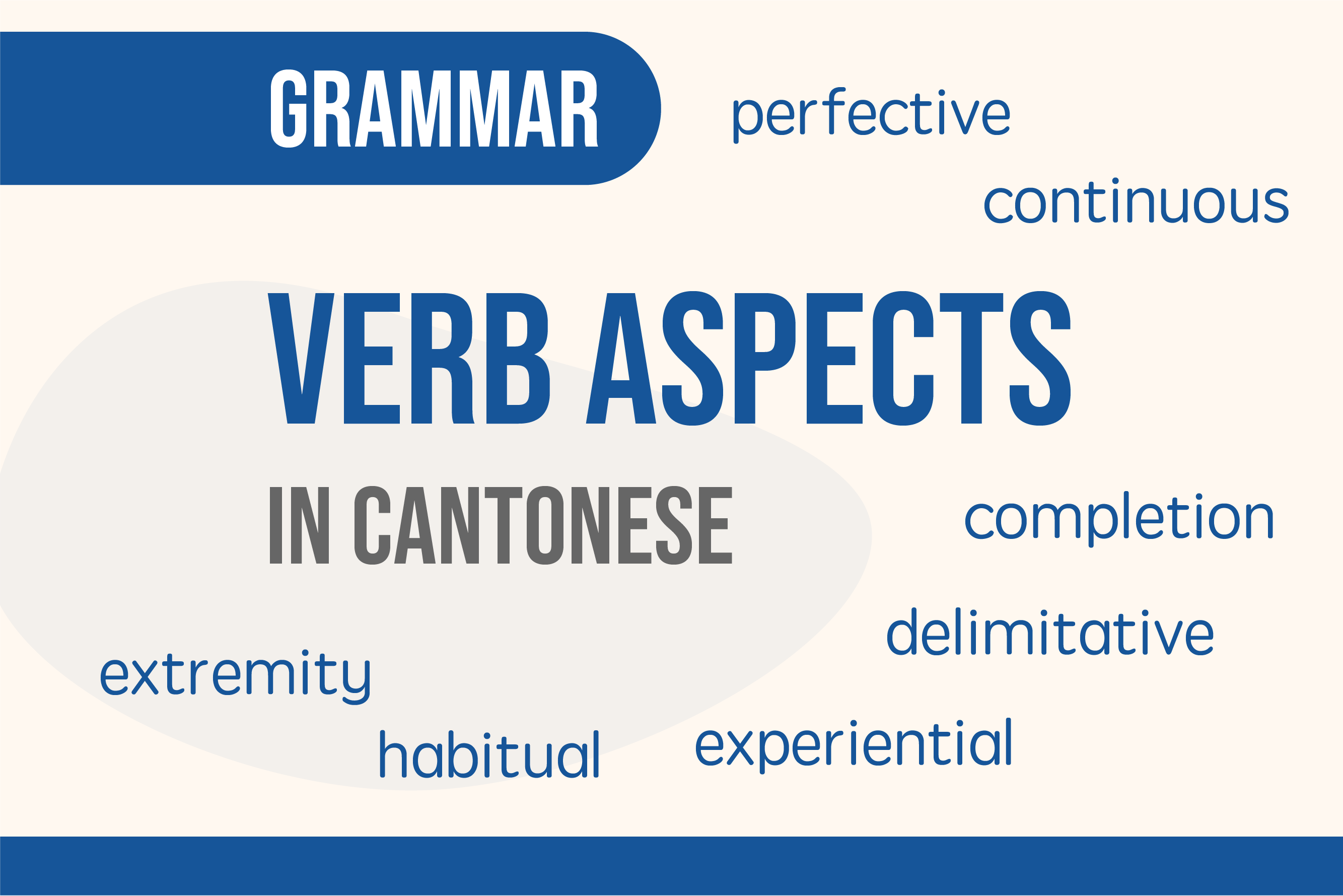Table of Content
Just like you can't learn a verb in English without understanding tenses, you can't master Cantonese verbs without knowing about ‘aspect.’ Unlike tenses, which tell us when an action occurs, aspects describe how an action occurs or how it is viewed by the speaker. They express things like the frequency, duration, and whether or not the action is completed.
Why Aspect Markers Aren’t the Same as Tenses?
For English speakers, the concept of ‘aspect’ might initially be difficult to grasp. When choosing a tense in English, it’s more about when the action occurs, often linked to a timeline and viewed from an objective perspective. In contrast, aspects in Cantonese focus more on what the speaker wants to emphasise, though they are sometimes related to time as well. That’s why you’ll often find that sentences using the same tense in English may have different aspect markers in Cantonese, and vice versa.
Take the aspect marker 咗, for example. It’s the perfective aspect marker in Cantonese, indicating that an action has been completed. However, depending on the context, it can correspond to the present perfect, past, or past perfect tense in English. Additional words are often needed to show the exact timeline of the action.
Another example is the difference between 咗 (perfective) and 過 (experiential). Although both of them can sometimes be translated as the present perfect tense in English, they convey different meanings in Cantonese. 咗 simply indicates that the action occurred or has happened, while 過 emphasizes having experienced the action.
While some aspect markers tend to align more closely with specific tenses, this isn’t always the case. That’s why it’s important not to directly equate aspects with tenses or assume that particular aspect markers will always match specific tenses. Instead, focus on understanding how each aspect functions within its own context.
How to use a Verb Aspect Marker?
When using verb aspect markers, it’s similar to how verbs are conjugated or modified in other languages. The aspect marker follows the verb, and in some cases, the verb may need to be 'split' to accommodate the marker. This is a key element of how verbs are structured in Cantonese. For example:
我食咗蘋果
I ate an apple.
(食 - to eat)我畢咗業
I have graduated.
(畢業 - to graduate)我思考咗好耐
I have pondered for so long.
(思考 - to ponder)
Notice how the verb aspect marker 咗, is placed in different sentences. The differences in structure occur because some verbs are used with a complementing noun, while some are double-character verbs. The good news is that the formation remains consistent for each verb, even when different aspect markers are used. Don’t worry if this seems confusing right now—we'll explain more about the formation in the linked articles below.
How Cantonese Differs from Mandarin with Verb Aspect Markers?
What’s particularly interesting is that Cantonese has a wider variety of verb aspect markers compared to Mandarin. Most of these markers are unique to Cantonese, except for 完 and 過, which are shared between both languages. This distinction sets Cantonese apart when it comes to expressing verb aspects.
You might wonder how Mandarin expresses the same meanings as the verb aspect markers in Cantonese. Well, Mandarin typically uses additional words or time adverbs in sentences to convey these meanings, rather than modifying the verb itself like in Cantonese. For example, the habitual marker 開 in Cantonese means "usually" in English, notice how 通常 ("usually" in Mandarin) is used differently compared to 開 in Cantonese.
Cantonese:
我 食開 呢間餐廳
(食 - to eat)Mandarin:
我 通常會吃 這家餐廳
(吃 - to eat)
I usually eat at this restaurant
List of Cantonese Aspect Markers
We’ve covered 11 verb aspect markers in this guide. It’s perfectly fine if you don’t grasp all of them or the subtle differences between similar markers right away. My suggestion is to first understand the general meaning of each marker, then immerse yourself in Cantonese reading and listening to see how these markers are used in real contexts. So here goes.
